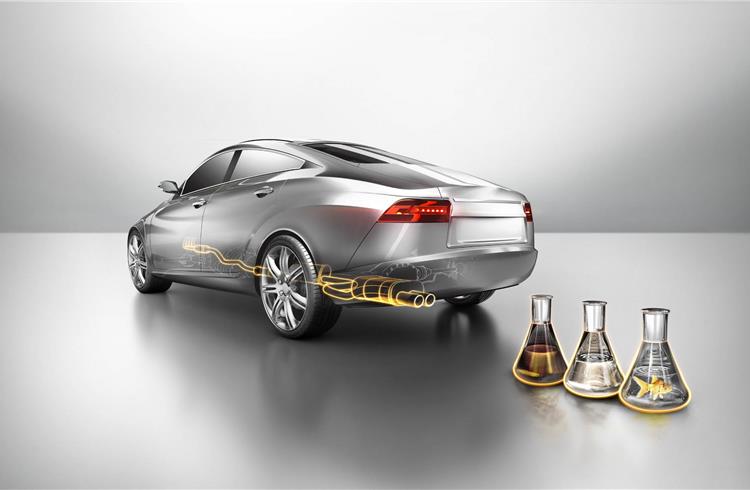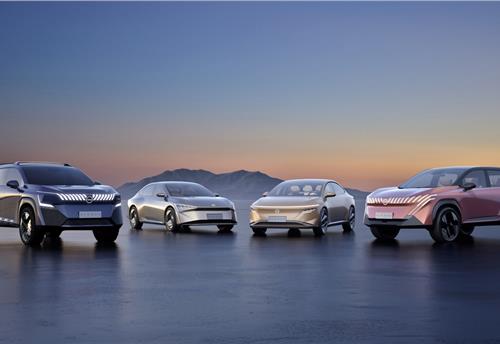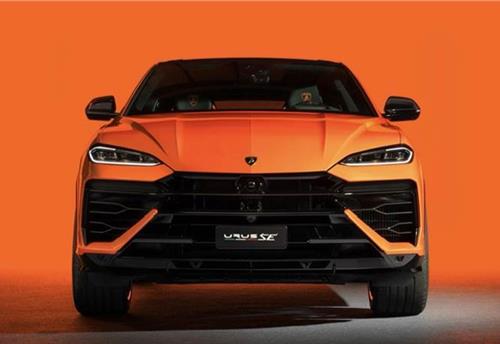Emitec gives Continental new charge to lower NOx emissions in diesel exhaust gas
At the 36th International Vienna Motor Symposium held last week, international automotive supplier Continental highlighted solutions that will help diesel engines
At the 36th International Vienna Motor Symposium held last week, international automotive supplier Continental highlighted solutions that will help diesel engines meet future nitrogen-oxide (NOx) legislative limits. Last year Continental had acquired 100% ownership of Emitec, an exhaust technologies specialistthereby enabling it to offer complete exhaust-gas aftertreatment systems.
Exhaust aftertreatment has become a core technology when it comes to diesel engines. This is due, in particular, to the stricter NOx limits of the Euro 6 standard, the even stricter super ultra-low emission vehicle (SULEV) limits for California, and the upcoming real driving emissions (RDE) test conditions.
"Future emissions systems must make real progress in terms of NOx emissions. This requires a complete understanding of the systems as well as individual components that are compatible with each other – from fuel injection to the final stage of exhaust aftertreatment," says José Avila, Head of the Powertrain Division and Member of Continental's Executive Board. "With the incorporation of Emitec into the Continental Fuel & Exhaust Management business unit, we now have a range of technologies that is extremely beneficial, particularly when it comes to customizing exhaust aftertreatment for different types of vehicles."
The solutions presented in Vienna included a compact catalytic converter that can be installed close to the engine (close-coupled). This means it heats up faster and therefore starts converting untreated emissions earlier. The electrically heated catalytic converter (e-cat) does the same thing in hybrid vehicles. It heats the catalyst to the right temperature when the combustion engine has been switched off for a long period to save fuel. In Vienna, Continental also presented a new ‘selective catalytic reduction’ (SCR) procedure that improves injection of the reducing agent in the smallest available space.
Technology for NOx-free diesel
In many ways, the exhaust gases emitted by Euro-6 diesel engines are already cleaner than some of the ambient air the vehicle itself travels through. This is particularly the case with regard to hydrocarbon, carbon-monoxide, and particle emissions. However, when it comes to nitrogen-oxide emissions, there is still room for improvement.
Close-coupled catalytic converter configuration
For the catalytic converter to work, the active surface of the substrate needs to be at a specific temperature in order to convert the untreated emissions. One way to ensure fast heating of the catalyst is to install the catalytic converter close to the engine. However, thus far, the size of catalytic converters has made it difficult to install them close to the engine. "Continental has developed the compact catalytic converter for precisely these kinds of applications. This component has a bivalve construction with the inlet and outlet for exhaust gases on the same side," says Dr. Markus Distelhoff, Head of the Fuel & Exhaust Management Business Unit at Continental. "This has two advantages. The component is very short, and the external circulation keeps the catalyst hot inside for a long period, with the heat evenly distributed."
Rapid warm-up for underbody designs
If a close-coupled design is not the desired option, Continental's electrically heated catalytic converter (e-cat) can also be used in underbody designs to ensure that the catalyst substrate is quickly heated to the required temperature using the heated disk. This means drive strategies that frequently switch off the combustion engine can be used in hybrid vehicles, without causing emissions in the cooled-down catalytic converter when the combustion engine is restarted. It also enables anticipatory heating for predictive drive strategies. "In hybrid vehicles, it is particularly important to understand the system as a whole with regard to the combustion engine and the electric motor," explains Distelhoff.
Quality of urea vaporization in the SCR assembly
For efficient catalytic reduction of NOx, the procedure with which a diluted urea solution is injected as a reducing agent into the exhaust gas is crucial. In order to achieve conversion rates of 98% and higher, the measurement and vaporization processes must be extremely precise. The standard systems today have a minimum distance of around 300 mm for injection in the direction of the exhaust flow and subsequent vaporization of the urea solution into a gaseous phase.
But this distance is difficult to achieve with a close-coupled design. Continental has therefore developed a system that injects the urea solution in the direction opposite to the exhaust flow. The solution is sprayed on a structure with a hydrolytic coating on the back of the catalytic converter. "This compact design also enables close-coupled systems for SCR exhaust aftertreatment," says Dr. Distelhoff. Together with Continental's reducing-agent injectors, the counter-flow injection system prevents urea sedimentation and ammonia slip, as well as a lack of reducing agents in the exhaust flow, even in highly compact designs. For precise control of exhaust aftertreatment, Continental supplies sensors such as the Urea Level and Concentration, the NOx, as well as the High Temperature sensors.
RELATED ARTICLES
Kia displays EV5 and Sonet SUVs for Chinese market
Kia has unveiled a number of key models and new technologies for Chinese customers at the 2024 Beijing International Aut...
Nissan targets growth in China, unveils four NEV concepts at Beijing Motor Show
The two EVs and two plug-in hybrids are a joint effort with Nissan’s local partner Dong Feng and aimed to better address...
Lamborghini unveils Urus SE ahead of Auto China 2024
Electric-only range of 60km helps reduce emissions by 80%.





 By Autocar Pro News Desk
By Autocar Pro News Desk
 11 May 2015
11 May 2015
 4022 Views
4022 Views









